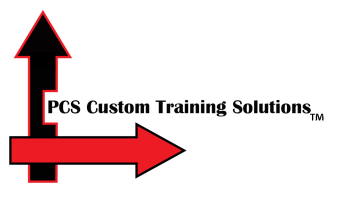Part One/Embracing the Curmudgeons
It seems that it was just last week Tuesday I was the young safety “kid” in the room. I rolled my eyes when someone referenced it, or made jokes about when I got to be their age, or lamented their deteriorating vision.
When someone reminds me that the 1980s were forty years ago I’m a little shocked. Just like I am when I realize I’ve been in the safety profession for longer than the 30-year-old I’m coaching has been alive. I find myself actually testing the math in my head in these moments, which is a little embarrassing.
With this year’s pandemic, I’ve mostly gotten over the not-so-young-woman looking back at me from my Zoom camera, but yes, there are ways to set up your laptop that make these experiences less ego-painful.
No one who works with me or knows me marvels at my millennial-like embrace of technology. (My twenty-something nieces gleefully show me youthful things like downloading apps. Jennifer, who patiently assists me with all things computer praises me when I do something adventurous, like change a password without assistance.)
This makes me the perfect tech business owner.
Let me mosey into why I think this is so …
Back in the day when I was that young safety person in the room (and a woman to boot) in the hazardous waste industry, I worked with a curmudgeon. Let’s call him Bruce.
[Because that was his name, and because there is no need to protect it. This is a bit of a love story, and I loved Bruce. And I am safe from libel because I am 99% certain that Bruce is dead. Or the oldest living human. But I digress … ]
To say that the hazardous waste business was a little rough around the edges at that time, well, that was an understatement. To say that it was male-dominated was almost stupidly obvious.
And yet Bruce, in that field of crusty and crass, was cranky enough that a colleague warned me about him before I met him.
“Patti, he’s a curmudgeon.”
I did well on my verbal SAT score, and this word I love:
cur·mud·geon | \ (ˌ)kər-ˈmə-jən \
Definition of curmudgeon
1: a crusty, ill-tempered, and usually old man
Bruce was an engineer I was working with on a project, and he was a curmudgeon. Proudly.
And he looked like a curmudgeon. Tall, angular, with stooped shoulders and a beak-like nose, he had the tendency to roll his eyes when he spoke. This between moments of closing his eyes and placing his fingertips on his temples, rubbing firmly, in a great show of excruciating pain. Typically about some naive idea I proposed. He also cursed. A lot.
Pithy observations such as …
“Patti, you seem like a nice girl, and it’s impressive that you have an Ivy League degree, but you are a <bleeping> idiot.”
That was the beauty of Bruce. He wasn’t cranky and ill-informed. He was brilliant. And mostly, he was right.
If one could get past the delivery to the crux of what he had to say, it was pessimistically accurate. Bruce was not sexist, he was not mean; he was pragmatic to a fault.
“Do you want me to outline all of the <bleeping> ways that won’t work? By rank or alphabetically? The top ten or the entire list of reasons that is preposterous and the biggest load of bull$&^ I’ve heard today?”
If you pulled up your seat and leaned in and braved the wrath of Bruce, he would bestow upon you the list of issues, all with data and thoughtful wisdom and a bit of dare-I-say boyish wit? Sprinkled liberally with profanity. As reward for your courage, you would indeed rethink your unreasonable idea.
He became an ally. Not that I ever really stopped being afraid of him.
I went to him over and over again with dumb ideas, but occasionally there would be a kernel of something useful in my offerings. I started to self-regulate my idealism, counter-proposing myself with Bruce-inspired cynicism.
In time he would praise me –rarely, which made it such a treasure– and I would beam.
“Carey, I’m so <bleeping> tickled that you turned out to be not as dumb as you look.”
I swooned.
It never occurred to me, ever, that I would become like Bruce.
But I did. It didn’t happen overnight, but happen it did, and while I go to great lengths to not resemble Bruce physically, and I do have some (minimal) filter between my brain and my mouth, I now tend to fulfill the role from time to time of the hard-boiled person in the room.
Lovingly encourage a youngster with pats on the head and praise for a notion that I know deep in my heart will fail in a catastrophic way?
Just not my style. Pretty sure doing so would make me twitch out of my skin.
The safer I feel with those I work and a handful that I mentor, the more frank I am.
It is a huge compliment if I cut you off mid-sentence to tell you you’re out of your mind. It means that I know you appreciate that life is short and that time is money and that there’s no point in either of us wasting one more breath than necessary on a concept that needs to be deep-sixed.
I suspect it doesn’t always feel so dandy on the receiving end.
A decade or more ago, web-based training came on the scene. I had a few clients who dabbled with it, explored it as a possibility.
When asked about it, I was reflexively dismissive. Computer-based training? No human in the room? That, I said, was a firm no for me.
“Do you want the list of reasons that online training is contrary to good safety principles?”
About seven years ago, at least one client was using computer-based training modules to replace some of their in-person safety training, which I had previously performed.
I was. In a word. Offended.
I went online to prove to myself and anyone who was foolhardy enough to ask, why web-based training could NEVER be a substitute for in-person, look-‘em-in-the-eye classroom or hands-on training.
Like Bruce, I was happy to give you that <bleeping> list by rank.
- Web-based training didn’t allow for or encourage interaction about anything that really mattered.
- It didn’t know the audience and didn’t tailor itself to what they needed or wanted to hear to be safer on the job.
- It had no humor, no style, no entertainment value. And thus, it put people to sleep or made them tune out. (And you couldn’t even see that they were sleeping!)
- Web-based training didn’t even have enough site-specific information to make it OSHA-compliant. Never mind relevant to the employee.
- It didn’t draw anyone in by sharing stories or case studies or getting them to consider real life consequences of risky behaviors or situations.
When it came to training my philosophy had always been about my learners – you need to figure out what was in it for them and then figure out a way to keep them awake, engaged and buying into it long enough to sway their opinion or beliefs, but more critically, their behavior after they left the class.
When it came to web-based training, all that was in it for them was to get the safety person off their back by checking a box. Done.
It was the antithesis of my entire put-yourself-in-their-workboots approach to safety training. My entire career. My core values as a safety professional.
[What you cannot know as you read this is that my blood pressure has gone up a few points just typing about it.]
Web-based safety training was beneath my standards and that of my clients.
And then, over months, I came to a realization.
Web-based safety training was a reality. It was not going away. It was growing.
I could hold onto my hard-won values about in-person training and as a business owner go the way of the dinosaurs and the Studebaker, or I could wise up, get a grip and do web-based training a different way.
Or as Bruce would have said, leaning back in his chair and smirking:
“Well, sweetheart, if you can’t run with the big dogs, stay on the porch.”
I’m a lot of things but I’m no porch-sitter.
In 2016, I incorporated PCS Custom Training Solutions to create web-based training that met my “get off my lawn” standards:
- We don’t do “canned” web-based safety training. We partner with clients who want content that is customized to their workplace hazards.
- Our instructional designers are experts in developing and designing interactive training elements that are specific to what our learners need to know, and they craftily weave “story” into what we present.
- We work with our clients to glean every morsel of information, including photos and policies and case studies and critical rules, so we can pack that into our courses. Company slogans, logos, message and tone; we can capture all that and we do.
- We make our courses as easy to use as we can. Not everyone is tech-savvy, and we want our courses to work for not only our users but our clients as well. For senior workers and twenty-somethings. For many of our clients we provide Help Desk services so that we get the call to assist a learner who doesn’t know their browser from their broomstick.
- Our knowledge checks or quizzes are relevant, not based on some trivia we ask a learner to memorize or some regulatory detail. We value risk-driven, scenario-based questions that capture exactly what decisions we want that employee to make on the job. (We don’t care if they know the regulatory citation for Hazard Communication, we want them to know where they can find a Safety Data Sheet.)
Anyone who has survived my in-person safety training knows that sleeping is not an option, nor is it something likely to happen based on how I teach.
I’m too passionate about what I do, and the safety of those who attend, to allow that to happen.
I’ll be darned if I’m going to base my business model on someone checking a box.
Bruce would say “<BLEEP> that <bleep>!”
My name is Patti, I own PCS Custom Training Solutions, and I am a web-based safety training curmudgeon.
You can reach me at pstedman@pcscustomtraining.com or 716 560 8297.

